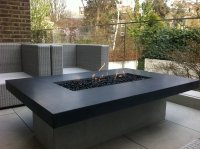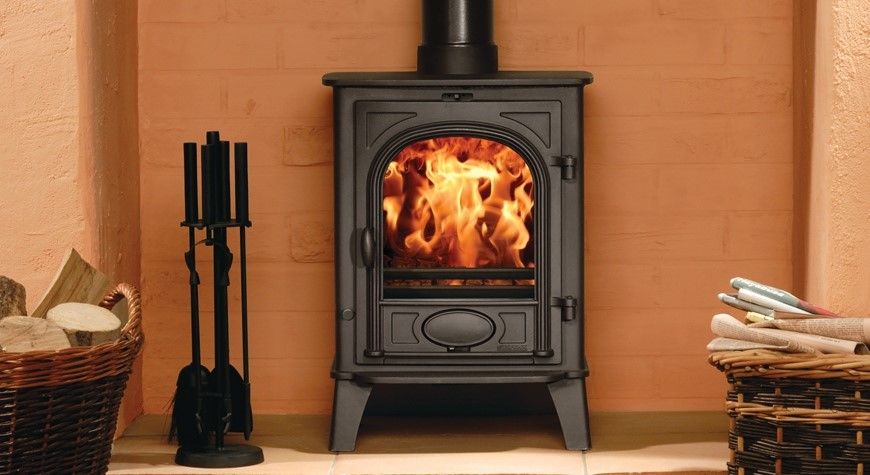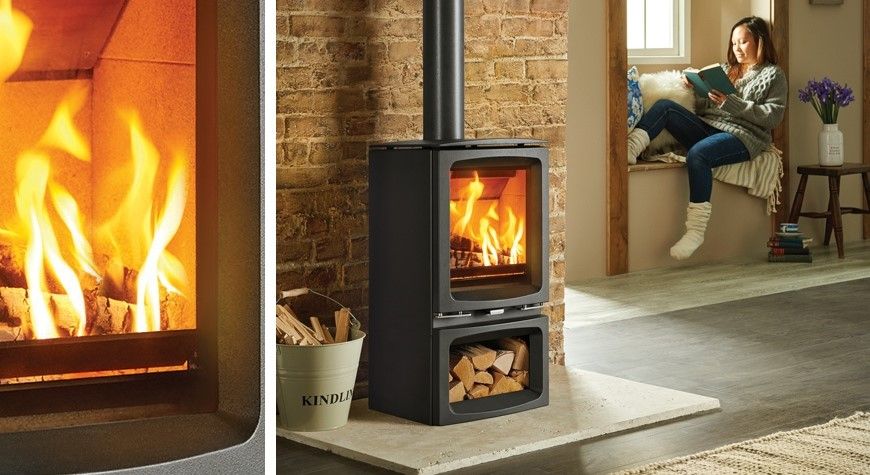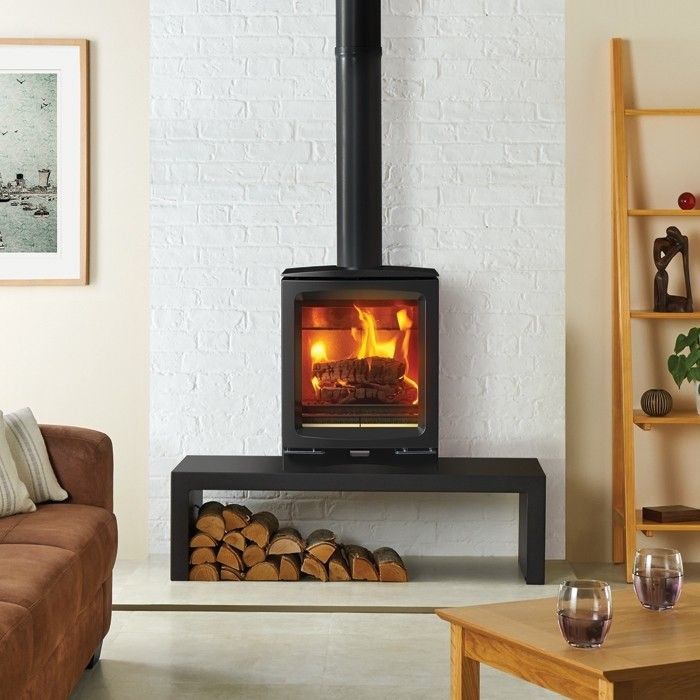A quintessentially English fire – the wood burning stove – is a fire that radiates warmth and cosiness, creating a truly homely ambience.
Their real sense of character makes them the perfect choice for a range of aesthetics, and if you are thinking of becoming the new proud owner of a wood burning stove you’re probably interested in knowing a few essential tips.
From how to light your wood burning stove perfectly, to knowing what type of wood to buy for your fire, Real Flame’s ultimate guide to wood burning stoves below aims to answer all your queries.
What is a wood burning stove?
Let’s start with the basics, a wood burning stove is how would you expect; a fireplace that generates heat and light through burning wood fuel and wood derived biomass fuel (such as sawdust bricks).
Can any property have one?
A wood burning stove does need a way to vent the powerful heat, smoke, and gas it produces, meaning that a chimney is required. There are no specific rules about installing one in certain types of properties but it may be worth checking with your local authority before fitting a flue.
Do I need planning permission to install a wood burning stove?
You do not need planning permission to install a solid fuel heating appliance, including a wood burning stove, as long as your property isn’t a listed building or place (LBP), and if you are not in need of introducing a new external flue and/or chimney.
So, what if I don’t have a chimney?
You will need to have a chimney for a traditional wood burning stove. However, planning permission is not required provided that the height of the chimney is not more than 1 metre above the highest tip of the roof. There are also some restrictions if you live within a conservation area.
Don’t worry if you don’t have a chimney in your property, as the team here at Real Flame can install a Metal Twin Wall Chimney system as an alternative. This alternative is growing in popularity as it saves the hassle of an otherwise complicated chimney installation process.
Who can install a wood burning stove?
To install a wood burning stove into any property, it either needs to be completed by a HETAS registered engineer or a competent engineer which will have to be signed off by the local council. Do not try to attempt installing yourself, as the process needs to be certified and done properly.
How do I light a wood burning stove?
There are six key stages to lighting your wood burning fire safely and efficiently:
- Prepare the stove – make sure the fire has had a previous air supply. On many models there is an indicator to inform you.
- Create a fire bed – you will need to place firelighters or paper and dry kindling wood on the fire bed. A successful fire will require plenty of kindling to aid a fiery performance.
- Lighting – wait for the kindling to catch fire and begin to burn. Make sure you have created a log guard – this keeps all the burning fuel inside and away from the glass.
- Leave the door slightly open – this helps the flue pull and assists in lighting the fire. It also avoids condensation build up on the front glass.
- Larger pieces – once your kindling is burning well, add larger pieces of split wood. Do not use full logs at this stage; build it up gradually, and make sure to not smother the fire.
- The door – you can now shut the door. You may also begin to add larger pieces of wood when necessary.
What do I need to light it?
A wood burning stove will have a flatbed for fuel, but please note that, unlike a multi-fuel stove, you can’t use coal. Having firelighters or paper is a great help in getting your fire going and kindling wood is a must-have.
What kind of wood do I need?
When it comes to what type of wood to burn, you can burn any. However, wood that has been seasoned is best for fuel. This Is because it has been cut and allowed to dry for a year.
Hawthorn wood is a great option as it gives a slow burn and a strong heat output. Horse chestnut is also a good choice for a good flame and strong heat.
If you can’t get your hands on seasoned wood, such as those above, any wood is able to be burned as long as it hasn’t been treated in any way.
How do I clean a wood burning stove?
Maintaining and cleaning your stove regularly will extend its life and make it much easier to clean when you do. There is no exact way to clean a wood burner, however here are a few tips:
- Use a drop cloth to surround your fire and protect the floor
- Invest in a metal scoop and brush for the ashes
- A wide putty knife will help to clear stubborn soot
- A spray bottle with vinegar, water, and soap solution, with a squeeze of washing up liquid will do the trick to clean the outside
- A fireplace ash vacuum is a handy piece of equipment (don’t use a household one)
- A chimney cleaning log will help clear the creosote in your stove pipe
Can I heat the whole house with a wood burning stove?
A wood burner using a back boiler is a great way to heat a whole house. Even if you aren’t using a back boiler, dependant on the size of your house, you can heat every room efficiently. A stove actually spreads heat further around the house than an open fire ever could.
Are wood burning stoves safe?
Yes, if you take the correct safety precautions then you should be more than safe around a wood burning stove. If you use a reputable installer, vent the stove correctly, use the correct fuel, clean it regularly and avoid creosote build-up then you will have no worries.
Can it save me money?
Solid fuel stoves are the most cost-effective source of secondary warmth. They have a high heat output which is extremely noticeable through the winter.
Wood burning costs around 4 pence per kilowatt hour, which is cheaper than gas at upwards of 6-7 pence, with gas prices constantly increasing. After some investigation you may realise that wood burning stoves can cut your energy bills.
Why should I choose a wood burning stove?
It’s no argument that a wood burning stove is a style statement, providing a stunning and classic exterior, but it also offers many over benefits that could make it the perfect fire option for you. They are efficient, cost effective and come in a range of styles to suit every home.
If you would like to find out more about our range of wood burning stoves you can see some of our products here, or you can simply pick up the phone if you have any further questions.
You can also visit us in our showroom to see the fire for yourself.
Get in Touch with Real Flame for more Advice and Information

















